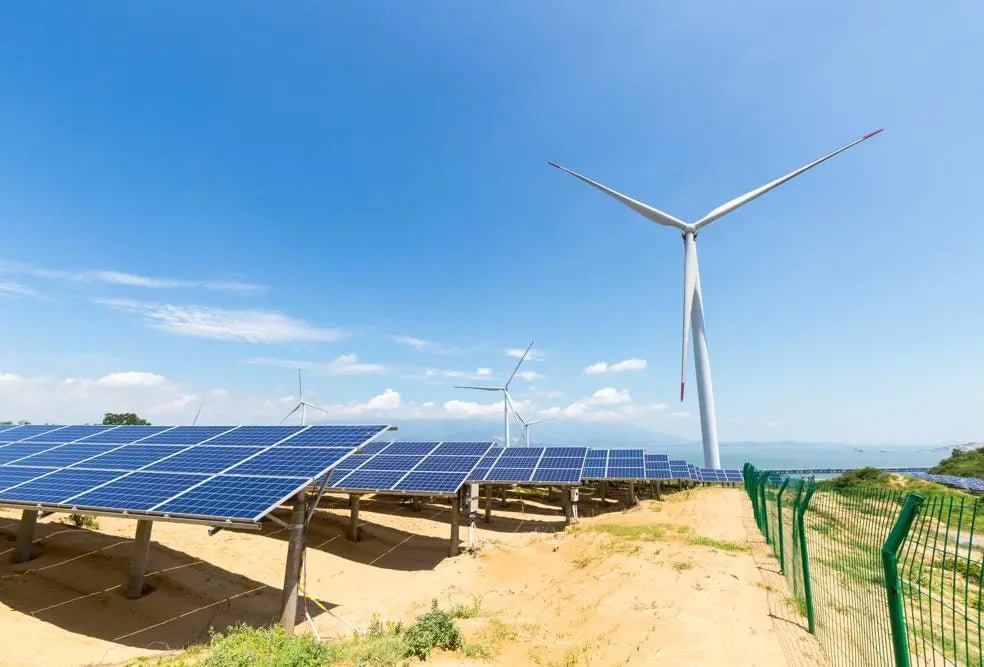Green finance and the UN Sustainable Development Goals (SDGs) are two interconnected concepts that can help drive positive change and promote sustainable development. Green finance encourages investments in projects, companies, and initiatives that address climate change, reduce pollution, conserve natural resources, and promote social responsibility. The UN SDGs are a set of 17 global objectives aimed at addressing various social, economic, and environmental challenges around the world.
Climate Financing: How Green Finance Can Help Achieve the UN SDGs
Climate financing refers to the allocation of financial resources towards projects, companies, and initiatives that aim to address climate change and its associated challenges. It involves the mobilization and investment of capital in activities that promote the reduction of greenhouse gas emissions, adaptation to climate impacts, and the transition to a low-carbon and climate-resilient economy. Climate financing plays a crucial role in achieving the UN SDGs by supporting sustainable development and mitigating the adverse effects of climate change.
Climate Financing Projects
There are various types of climate financing projects that contribute to the achievement of the UN SDGs. Renewable energy projects, such as solar and wind farms, are a prime example of climate financing. These projects promote the transition from fossil fuels to clean and renewable energy sources, thereby reducing greenhouse gas emissions and combating climate change. Another example is energy efficiency projects, which focus on improving the efficiency of energy use in buildings, industries, and transportation systems. By reducing energy consumption, these projects contribute to both environmental sustainability and economic growth.
Benefits of Climate Financing
Climate financing offers numerous benefits for sustainable development and the achievement of the UN SDGs. Firstly, it helps to mobilize the necessary financial resources for climate-related projects that might otherwise face challenges in securing funding. This enables the implementation of innovative solutions and technologies that can address climate change effectively. Secondly, climate financing promotes the creation of green jobs and economic growth in sectors such as renewable energy, energy efficiency, and sustainable agriculture. This not only contributes to poverty reduction but also fosters sustainable livelihoods and inclusive economic development. Lastly, by investing in climate-friendly projects, climate financing helps to mitigate the impacts of climate change and build resilience in vulnerable communities, thereby ensuring a more sustainable and secure future for all.
Sustainable Investment: Allocating Capital to ESG-Friendly Projects
Overview of Sustainable Investment
Sustainable investment, also known as socially responsible investment or ESG (Environmental, Social, and Governance) investing, refers to the practice of allocating capital to companies and projects that demonstrate strong environmental, social, and governance performance. This approach considers not only financial returns but also the impact of investments on society and the environment. Sustainable investment strategies can incorporate various factors, such as climate change mitigation, social justice, human rights, diversity and inclusion, and ethical business practices.
Sustainable Investment Strategies
There are several sustainable investment strategies that investors can adopt to promote sustainable development and contribute to the achievement of the UN SDGs. One common strategy is the integration of ESG criteria into investment decisions. This involves assessing companies based on their environmental impact, social responsibility, and governance practices before making investment choices. Another strategy is impact investing, which aims to generate positive social and environmental impact alongside financial returns. Impact investors actively seek out projects and companies that address specific social or environmental challenges, such as affordable housing, clean energy, or sustainable agriculture.
Benefits of Sustainable Investment
Sustainable investment offers numerous benefits for both investors and society as a whole. From an investor’s perspective, it allows for the alignment of financial goals with personal values and beliefs. By investing in companies that promote sustainability and social responsibility, investors can contribute to positive change while potentially achieving competitive financial returns.
Furthermore, sustainable investment strategies can help mitigate investment risks by considering long-term environmental and social factors that may impact the financial performance of companies. From a societal perspective, sustainable investment channels capital towards projects that have a positive impact on the environment and communities. This promotes sustainable economic growth, social inclusion, and environmental stewardship, ultimately contributing to the achievement of the UN SDGs.
Impact Investing: Aligning Financial Goals with Social Impact
Overview of Impact Investing
Impact investing goes beyond traditional sustainable investment strategies by explicitly targeting projects and companies that generate measurable social and environmental impact. It aims to align financial goals with social and environmental objectives, seeking to deliver positive change alongside financial returns. Impact investors actively monitor and measure the impact of their investments, ensuring that they contribute to sustainable development and the achievement of the UN SDGs.
Impact Investing Projects
Impact investing covers a wide range of sectors and themes, addressing various social and environmental challenges. For example, microfinance institutions that provide financial services to underserved communities are a common focus of impact investors. By supporting microfinance initiatives, impact investors empower individuals and small businesses to improve their livelihoods and escape poverty. Another example is affordable housing projects that aim to provide safe and affordable housing for low-income households. These projects help address the housing crisis, reduce homelessness, and promote social inclusion.
Benefits of Impact Investing
Impact investing offers several benefits that make it a powerful tool for promoting sustainable development.
Firstly, it allows investors to directly contribute to positive social and environmental outcomes, making a tangible difference in the world. This sense of purpose and impact can enhance investor satisfaction and engagement. Secondly, impact investing can catalyze additional funding from other sources, such as philanthropic organizations and traditional investors. By demonstrating the viability and impact of socially and environmentally focused projects, impact investors can attract further capital and scale up their efforts.
Lastly, impact investing promotes innovation and entrepreneurship by providing financial support to projects and companies that tackle pressing social and environmental challenges. This spurs the development of new solutions and technologies that can drive sustainable development and create a more equitable and resilient world.
How Companies are Harnessing the Power of Green Finance
Overview of Green Finance in Practice
Green finance is gaining traction in the corporate world, with companies recognizing the importance of sustainable development and the opportunities associated with green investments. Many financial institutions, such as banks and asset managers, are incorporating environmental and social criteria into their investment decisions and product offerings. Additionally, companies in various sectors are embracing green finance to fund their sustainable projects and initiatives.
JPMorgan Chase & Co.
JPMorgan Chase & Co. is a global financial services firm that has made significant commitments towards green finance and sustainable development. The company aims to facilitate $200 billion in clean financing by 2025, supporting projects that contribute to renewable energy, energy efficiency, and sustainable transportation. JPMorgan Chase also focuses on reducing its own environmental footprint by implementing energy-efficient practices and investing in renewable energy sources. Through its green finance initiatives, the company demonstrates its commitment to addressing climate change and promoting sustainable development.
Microsoft
Microsoft, a leading technology company, is another example of a company harnessing the power of green finance. The company has set ambitious sustainability goals, including becoming carbon negative by 2030 and removing its historical carbon emissions by 2050. To achieve these goals, Microsoft is investing in renewable energy projects, energy-efficient technologies, and carbon offset initiatives. The company has also issued green bonds to raise capital for its sustainability initiatives. By leveraging green finance, Microsoft is actively contributing to the achievement of the UN SDGs and demonstrating leadership in sustainability.
Conclusion:
Green finance and the UN Sustainable Development Goals are powerful tools for creating positive change in the world. By encouraging investments in projects, companies, and initiatives that address climate change, reduce pollution, conserve natural resources, and promote social responsibility, green finance is an essential tool for achieving the SDGs.
Moreover, sustainable and impact investing strategies can further maximize the potential of green finance to drive positive change. By aligning financial goals with social and environmental impact, individuals and organizations can contribute to sustainable development and create a better future for all.







